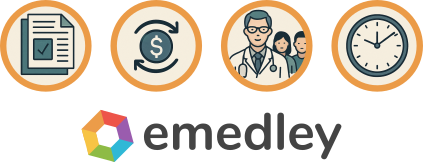Streamlining Schedule Requests and Site/Preceptor Payments

Streamlining Schedule Requests and Site/Preceptor Payments
Challenges in Managing Clinical Site and Preceptor Payments
Managing clinical site and preceptor payments is a complex challenge faced by institutions and their partners in healthcare education. Coordinating extensive documentation – from clinical site information to preceptor agreements and associated fees- often requires substantial administrative effort 1 and careful oversight. Already equipped with a robust and comprehensive management and tracking platform, eMedley was the ideal solution for forward-thinking medical schools, such as A.T. Still University School of Osteopathic Medicine, seeking to enhance transparency and streamline administrative tasks. eMedley’s customizable suite enables centralization of critical data, automated approvals, and secure access to all clinical site and preceptor records – transforming once complex processes into an organized and seamless workflow.
Streamlined Schedule Requests for Students and Faculty
eMedley’s approach to streamline the schedule request process directly responds to the realities faced by institutions recruiting and managing clinical partnerships and affiliation agreements. Faculty and students can easily submit their own clinical experience requests through eduSched using highly flexible forms that are customized to capture the specific information required by each department or track. The system also accommodates new clinical sites and preceptors that may not yet be listed, automatically triggering a live indicator on the form itself as well as automatically sending an email notification to administrators to initiate the necessary next steps.

Efficient Approval and Fee Management
The automated approval process within eMedley simplifies management of clinical site and preceptor confirmations. Once sites and preceptors are approved through the system, associated fees–whether for the clinical site, individual preceptors, or preceptor groups–are automatically populated into the relevant records. This ensures accuracy and reduces manual entry errors. Additionally, the platform supports complex scenarios such as splitting preceptor payments by percentage, providing institutions with the flexibility to handle varied compensation arrangements efficiently within a single streamlined workflow.
Improving Transparency and Communication
eMedley enhances transparency by keeping students informed throughout the payment approval process. When students are responsible for fees, they receive timely notifications and can view their financial obligations in a read-only format, ensuring clarity without allowing unintended modifications. The system also manages the approval workflow for student-paid fees, maintaining control and accountability. Comprehensive reporting capabilities further support administrators by clearly distinguishing between clinical site and preceptor payments, making it straightforward to monitor all financial responsibilities in one centralized platform. This level of visibility helps institutions maintain accuracy and facilitate smooth financial operations related to clinical education.
Optimizing Clinical Payment Workflows
Managing clinical site and preceptor payments no longer needs to be a complex, time-consuming task. With eMedley’s customized solutions, academic institutions can streamline schedule requests, automate approvals, and maintain clear, transparent communication with all stakeholders. By centralizing fee management and providing comprehensive reporting, institutions gain better control over their clinical education workflows while supporting strong, productive partnerships with clinical sites and preceptors. eMedley is committed to supporting our clients in transforming these processes into streamlined, management systems that improve the clinical learning experience of everyone involved.
1Journal of the American Association of Nurse Practitioners 31(11):p 648-656, November 2019. | DOI: 10.1097/JXX.0000000000000301

















